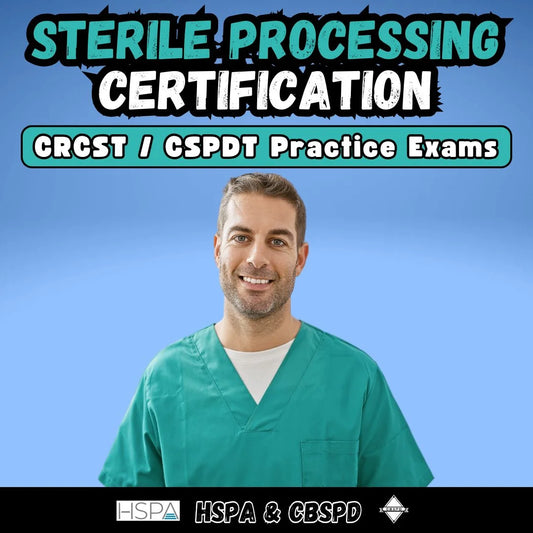Sterilization Efficacy and Killing Microorganisms

Sterilization is a critical process in various industries, including healthcare, pharmaceuticals, and food production, where the eradication of microorganisms is essential to ensure safety and prevent the spread of infections. In the United States, strict regulations and guidelines are in place to ensure that sterilization methods effectively eliminate microorganisms. To evaluate the efficacy of sterilization processes, specific microorganisms are employed as testing agents. These microorganisms serve as indicators to determine the successful eradication of potentially harmful pathogens. This article explores the significance of microorganisms used in testing sterilization efficacy in the United States.
The Role of Microorganisms in Sterilization Testing
Microorganisms used for sterilization testing play a pivotal role in assessing the effectiveness of sterilization processes. They serve as indicators, replicating the behavior and characteristics of pathogenic microorganisms that pose potential risks to human health. By subjecting these testing agents to sterilization processes, the efficiency of the methods employed can be evaluated.
Typically, microorganisms chosen for sterilization testing are those with robust resistance to physical and chemical agents. The selection of appropriate microorganisms ensures that the sterilization methods are thoroughly tested and capable of eliminating a wide range of pathogens. The chosen microorganisms may include bacteria, viruses, fungi, and spores.
Common Microorganisms Used in Sterilization Testing
-
Geobacillus stearothermophilus: This spore-forming bacterium is widely used in the pharmaceutical industry for evaluating the efficiency of autoclaves, steam sterilizers, and dry heat sterilization methods. Its spores have high resistance to heat, making them ideal indicators for assessing sterilization efficacy. This microorganism is also commonly used in testing efficacy of H2O2 or Vaporized Hydrogen Peroxide (VHP) sterilization.
-
Bacillus atrophaeus (formerly Bacillus subtilis var. niger): Another spore-forming bacterium used in sterilization testing, especially for ethylene oxide sterilization methods. Its spores are highly resistant and can withstand harsh chemical environments, making them reliable indicators.
-
Escherichia coli: As a non-spore-forming bacterium, E. coli is commonly used to assess the efficiency of sterilization methods in the medical and laboratory settings. Its sensitivity to heat and other sterilization techniques makes it a suitable indicator for routine testing.
-
Aspergillus brasiliensis (formerly Aspergillus niger): A common mold used to evaluate sterilization processes involving hydrogen peroxide, such as vaporized hydrogen peroxide sterilization. Its spores are resistant and can provide insight into the effectiveness of these methods.
Regulations and Guidelines in the United States
In the United States, various regulatory bodies and organizations establish guidelines for sterilization processes and the evaluation of sterilization efficacy. These guidelines ensure that microorganisms used in testing represent a worst-case scenario and help manufacturers and healthcare providers maintain stringent quality control standards. Some key regulatory bodies include:
- Food and Drug Administration (FDA): The FDA sets standards for sterilization in the healthcare and pharmaceutical industries. It provides guidelines on sterilization process validation, including the choice of appropriate microorganisms for testing.
- Association for the Advancement of Medical Instrumentation (AAMI): AAMI publishes guidelines and standards for sterilization processes and the evaluation of efficacy. These guidelines cover various sterilization methods and the use of microorganisms in testing.
When it comes to testing the efficacy and killing power of our sterilizers, choosing the right microorganism is essential. According to AAMI ST79:2017, sterilizer efficacy monitoring must be performed weekly, preferably daily with biologicals to include after any major repairs, utility outages or when sterilizing implants. Most facilities have taken a stronger stance with biological testing to include once daily as first cycle of the day and/or biological testing every load. Testing daily is best practice.
Share
Let customers speak for us
from 239 reviewsI took the practice test and I got a 91% on my certification exam!!
This course was the extra boost that I needed in order be confident in passing the exam. Thank you for all the information provided. I even refer to your notes while working.
Very helpful to me I can study any where at my own pace and low cost than going to school...I'm glad that there is something like this online to help anyone who want to pursue their career as a sterile processing tech.
I loved it, it’s very informative and the questions are great, it’s a great resource to purchase if you want to prepare for your certification exam!
I’ve really enjoyed this course so far. It delivers the information in a straightforward, digestible way. The Sterile Guy has compiled a highly effective program. Thanks very much from one highly satisfied customer!
The practice exams are detailed and easy to navigate. Brandon continues to show his passion in this industry by sharing his knowledge with up-and-coming techs. I also recommend investing in his flashcards. It has helped me greatly. Thank you, Brandon!,
These practice quizzes really helped me get the hang of answering questions related to instruments and the processes of preparing them! I even bought them twice cause I ran out of time lol. Super helpful!
I recently completed the Sterile Processing Guy course online and was extremely impressed. The content was clear, well-organized, and easy to follow. It helped me better understand important concepts like decontamination, disinfection, and sterilization. I appreciated how practical and informative the lessons were, it definitely made studying for certification feel more manageable. I highly recommend this course to anyone pursuing a career in sterile processing!
I won’t lie, I failed the first time around. So I decided to buy this practice test and I passed with flying colors my second go. Highly recommend to anyone interested in the CER, it helped a lot!
The flash card quality is amazing! Bravo sir! The card quality is way above average, questions are great! I’m still learning, utilizing these cards and your practice tests. Thanks for all the info!
I passed the CRCST exam. Taking reg sterile guy practice test over and over definitely helped get the job done.
This certification prep course is a must. Great videos with a lot of information and plenty of of practice exams.
These flashcards are so helpful and well put together. Highly recommend!
I'm really happy that I purchased the SP practice exam. I love how if you answer the question incorrectly, the correct answer will include the page number of the text book to find the answer. The questions are literally based on the textbook. I suggested "The Sterile Processing Guy" to my friend that is studying for the exam as well.








